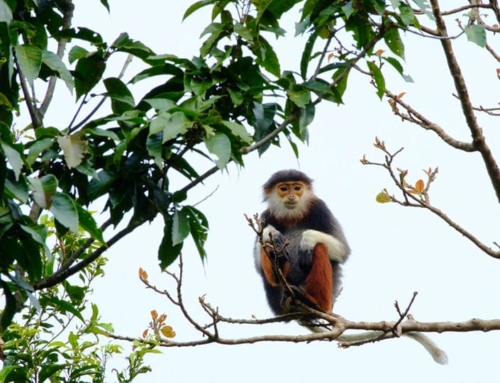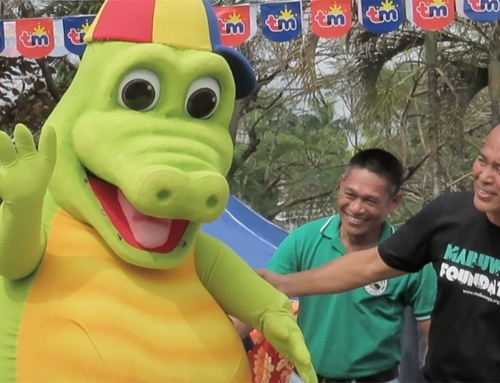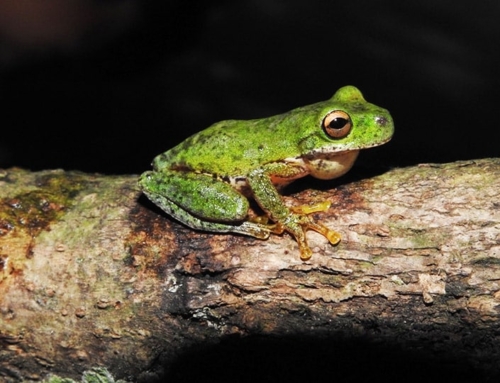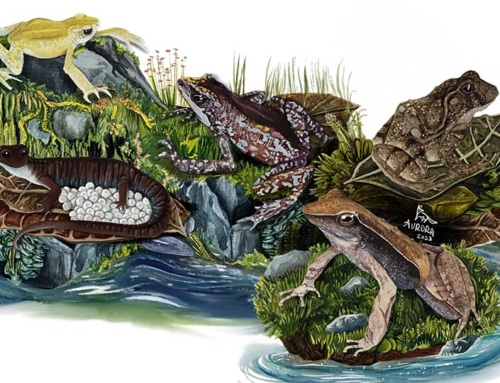Pria Ghosh introduces one of our Amphibian Programme partners: Project Palaka, the first amphibian conservation programme using captive breeding in the Philippines.
On a group of remote islands of the Philippines, amid growing tourism, white-sand beaches, and dramatic limestone caves, a small brown frog has been quietly slipping away. The Gigantes forest frog, once thought to live on four of the ten Islas de Gigantes, is now only found on the two largest, and what little research there is suggests populations are declining rapidly there as well.
The Gigantes forest frog has barely been studied: its reproductive behaviour, population dynamics, even its original range and the full extent to which the species has declined, is unknown. What is known is that the species is Critically Endangered, and that it seems to have unique habitat requirements. The frogs spend most of their lives sheltering in the islands’ karst limestone cave system, venturing into the forests nearby to feed, and hiding in tiny cracks and crevices in the rock for protection.

Islas de Gigantes is an island chain within the larger Western Visayas archipelago in the Visayan Sea. Image © Patrick Poculan
The case of the Gigantes forest frog exemplifies many of the complex, synergistic challenges faced by our partners. The Islas de Gigantes has a high poverty rate and limited infrastructure – the second largest island Gigantes Sur, for example, does not have a regular electricity supply, and the islands have no waste collection facilities. Tourism has grown rapidly in recent years, which has helped in reducing the poverty rate but has also placed increasing pressure on the natural environment, including causing higher rates of erosion in the Gigantes forest frogs’ limestone caves.
Local communities have seen many researchers and international NGOs come and go, and renege on promises, which has led to ongoing mistrust. In addition to this, one of the key threats facing the Gigantes’s unique wildlife is an invasive tree harvested widely for charcoal – environmentally damaging but essential for many people’s livelihoods.

The Gigantes forest frogs spend most of their lives sheltering in the islands’ karst limestone cave system. Image © Jero Manulat
Meet Project Palaka
Amid all these huge challenges, who would notice a little, unobtrusive frog silently slipping towards extinction? Project Palaka, a Synchronicity Earth partner, has noticed and is changing the course of the species’ trajectory. Around the world, amphibians are the ‘canary in the coalmine’ for environmental degradation. Their existence on both land and water, and their environmental sensitivity, means that if habitats can be maintained in a state suitable for amphibians, the same habitat will be able to provide resources and homes to all other species too, including humans and the tourists that the Gigantes Islands increasingly rely on.
To save the frog and its habitat for everyone, Project Palaka has launched the first-ever conservation initiative for this species. It has started a captive breeding programme, the frogs’ reproductive requirements are being studied, and at last a dedicated organisation with a long-term vision is committed to building trust and partnership with local communities. Thanks to Project Palaka, the community are starting to feel proud of this frog, found only on their islands.

The Gigantes forest frog. Image © Jero Manulat
In August 2021, Project Palaka embarked on its first field trip, and secured 21 adult frogs in captivity – over 100 days later (the first days are critical in any captive breeding programme, while the correct husbandry conditions are being worked out), all the frogs are still thriving, and some males have even started calling for mates. At this moment, the team are now back in the field conducting threat assessments and research and working with local communities to work out how they can secure the wild habitat, ensuring that the offspring of these captive frogs can be safely returned to the wild in the near future.
The organisations we support are often working at an intersection of insufficient data, species with very specific habitat requirements, and working outside the protected area network. As well as this, they are often in challenging political and socio-economic environments, and addressing an array of compounding threats.
Looking forward
Over 40 per cent of amphibian species – ecologically unique, fascinating species, with as much inherent value in their existence as any other – remain at risk of extinction. Many species face what was, until recently, the fate of the Gigantes forest frog population – quietly shrinking, retreating, and disappearing into what remains of their habitat until one day the world has lost one more valuable piece of nature’s puzzle without even realising it.
However, as Project Palaka is demonstrating, this does not have to be the case. Synchronicity Earth partners around the world are changing the narrative and helping to change the trajectory for myriad species, working to give overlooked, precious species and ecosystems the fighting chance that they deserve.





